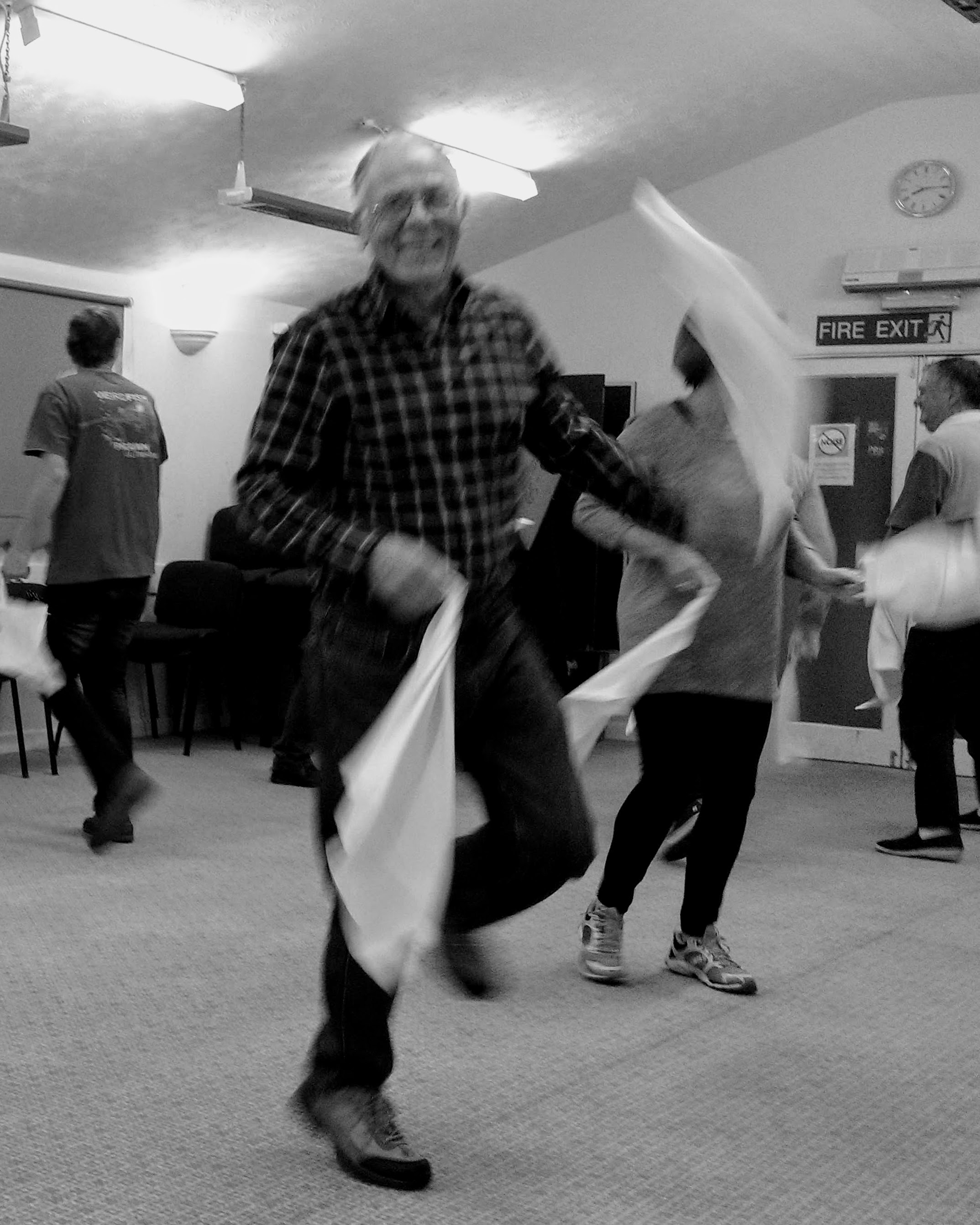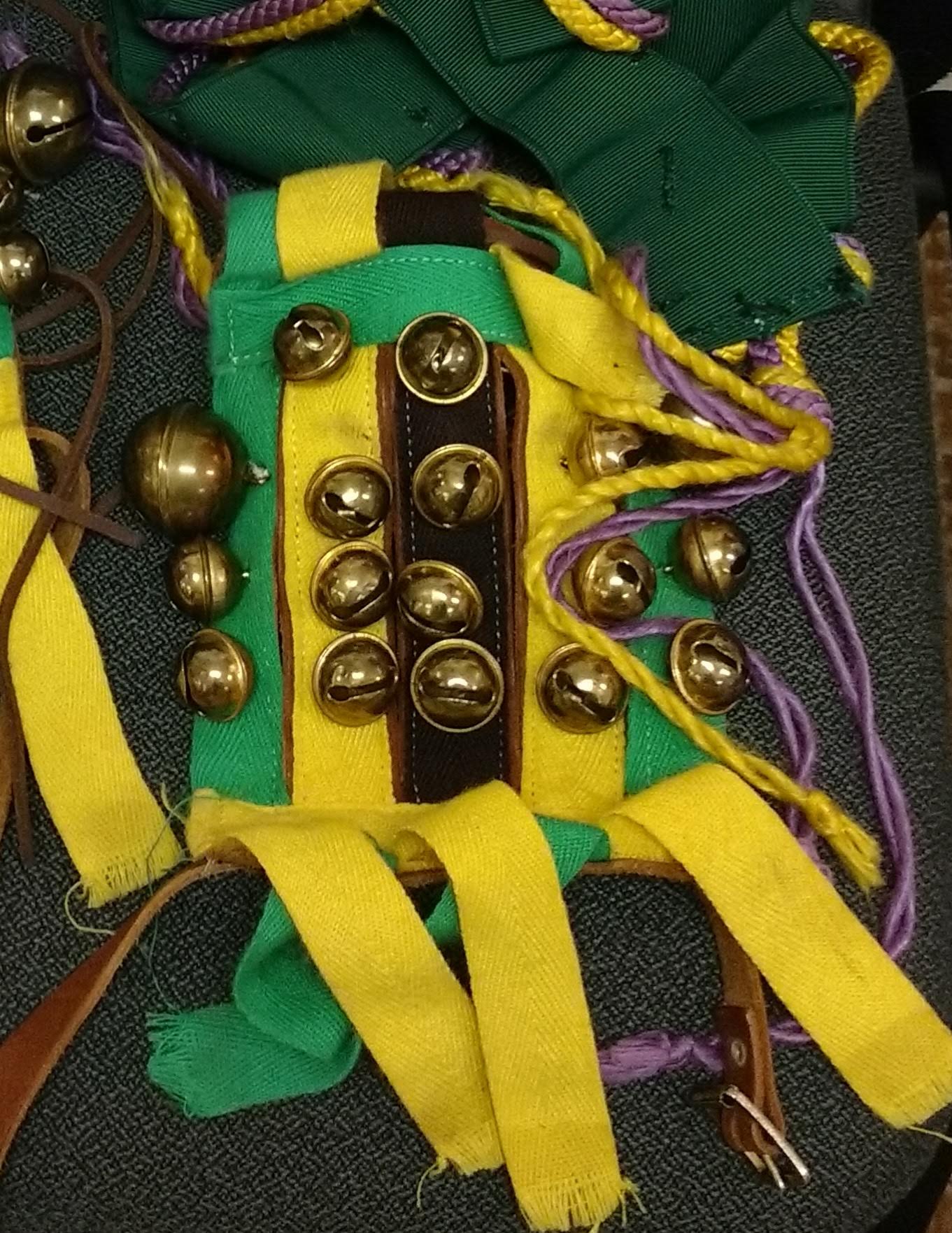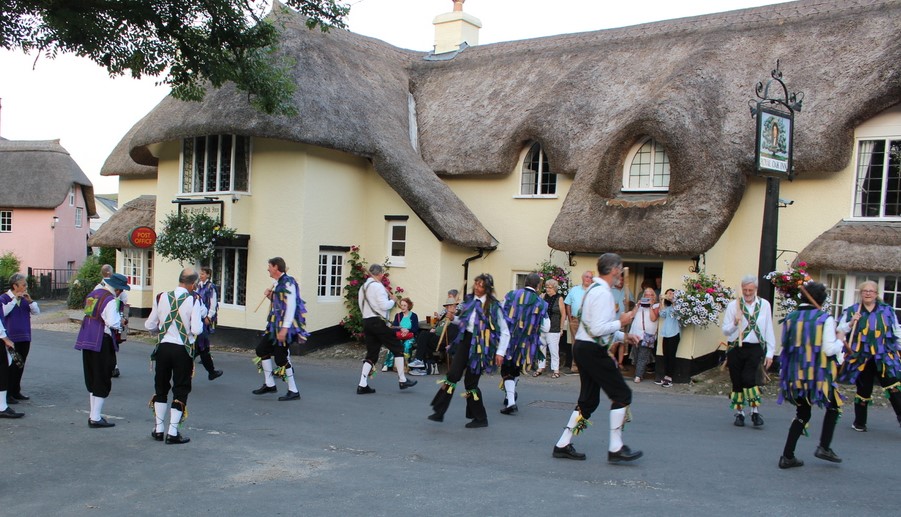Sounds like a fieldtrip’s in order. I head across the Pond to search for …well, England. A white handkerchief flashes in my peripheral vision. Enter the West Somerset Morris.
Morris dancing, that most quintessential of ancient English folk dances, prances proudly through my youth. May Day festivities, royal jubilees, Christmas pub crawls, the Morris dancers were always there in sashes, tabards and tatter jackets. The sounds of the concertinas and fiddles blending with the bells attached to the dancers’ shins. To the rest of the world, the scene may be evocative of cosy murder mysteries; Morris dancers used as a cinematic cue we’re in jolly, quaint, quirky, hankie-flapping England. It’s bound to be one of the dancers who trips over the dead body.
But I digress. I’m here to discover my connection to this English tradition. The West Somerset Morris is brave enough to let me visit a practice session.
I drive to Sampford Brett, a village just outside Exmoor National Park. As I check directions to the village hall, a peal of bells makes me smile. I roll down my rental car window. The joyful tones cascade from the church belfry and wash over me; memories of childhood Sunday evenings. Nowhere else in the world do bells sound like this. But I mustn’t tarry. The Morris waits for no one. Gathering up my pen and camera, I pull open the door to the village hall, and step inside the beating heart of English tradition.
‘Bagman’ Ray greets me ‒ Bagman an infinitely more interesting title than secretary. Ray is also the Foreman of this Morris, aka the dance teacher. Next, I meet Squire Joe (the leader). Other dancers arrive. In a corner, the musicians set up: fiddle, concertina and flute.
I’m placed in a safe position at the side of the hall – there are spinning bodies to avoid after all. Members line up and the music starts. Foreman Ray names the dances for me: Maid of Mill, Banbury Bill, Nuts in May (this one involves chunky sticks. I’m here to tell you, they don’t hold back in taking swings at each other), Border Dance, Skirmish, Jenny Lind, to name but a few. It’s a chilly night but there’s soon a sweat on brows. This is a workout and then some.

I manoeuvre carefully round the perimeter to take photos as Foreman Ray calls out dance steps. Squire Joe wants more energy from the dancers. The dancers want Squire to take smaller lateral steps so the lines remain true. This is an art steeped in tradition, and members are sticklers for maintaining form. I try a discreet little hop step myself. It’s harder than it looks.
During the tea break, I ask the group about their own roots and ties, both to this dance and this part of the country. Members recount stories of global travel, coincidences and genealogical flukes. These stories follow tomorrow in Part II.
Members finish their tea. The fiddle, flute and concertina fire up, and they’re off again ‒ sticks clanking and whoops whooping. The steps have exotic names like Whole-Hey, Half-Gyp, Caper, Hockle Back and Cross-Hop. Handkerchiefs must be flicked outwards from chest level, no lower. Ray explains these little details distinguish one Morris from another and one area of the country from another. It’s fascinating. I’m so joining the Morris when I move back here!
Or so I think until Bagman hands me a pair of handkerchiefs and invites me onto the floor for the final dance. Let’s just say, it’s a good job I wasn’t trusted with the sticks. As I cavort gamely, trying not to trip anyone while flicking my handkerchiefs with abandon, I’m reminded of the description of Morris dancing in Cecil J. Sharp’s book, The Morris, written in 1907: ‘…the Morris dance is a bodily manifestation of vigour and rude health, and not at all of sinuous grace or dreaminess.’ I may have the rude bit down as I crash around. No one declares I dance with ‘sinuous grace’. Maybe I’m a natural after all.
All too soon, it’s 10pm and practice is over. Ray tells me I’ve only been privy to half the experience so far. It’s on to the pub for a pint, as much a part of Morris as anything, with its history steeped in ale since mediaeval times. Unfortunately, I have an early assignment tomorrow, so have to pass on the offer. Good excuse to come back for the rest of my education though.
I wind along the inky-black lanes towards Porlock, wrapped in a sense of history, of belonging, of roots. Was it the dance? The tea? The tradition? The comradery? Yes. Yes, it was.
I’ll never take for granted the work and dedication of individuals preserving traditions. They mean so much to the expatriate ‒ this one, anyway. Can I fully explain my connection to home? Not really. It just is. But I reconnected with part of my England in a tiny hall in a tiny village, dancing with people I’d never met. I found kindred spirits in the jingling heart of my home, complete with church bells and Morris bells. I can’t thank the West Somerset Morris enough for pulling me back into the dances of England.

For more photos and video from my visit to the West Somerset Morris: https://www.facebook.com/author.traceygemmell/
Here are some resources if you’d like to learn more – or even join the dance!
http://www.westsomersetmorris.co.uk/
https://themorrisring.org/publications/morris-tradition
https://www.rattlejagmorris.org.uk/history-of-morris-dancing
The Morris Book by Cecil J. Sharp, 1907



Hi, Just wondering if the Morris dancers would be willing to attend a village day at North Barrow near Castle Cary in Somerset to celebrate the 25th anniversary of the North Barrow Community Hall opening in the village. The date will be Saturday 05/08/2023.
Please could you inform me if this would be possible & if the date is free? We are hoping to include local press at the event.
Kind regards, Wendy Cohen
Hi Wendy, I wrote this blog a few years ago about the West Somerset Morris but I have nothing to do with their schedule. Please contact them directly. Good luck! Tracey